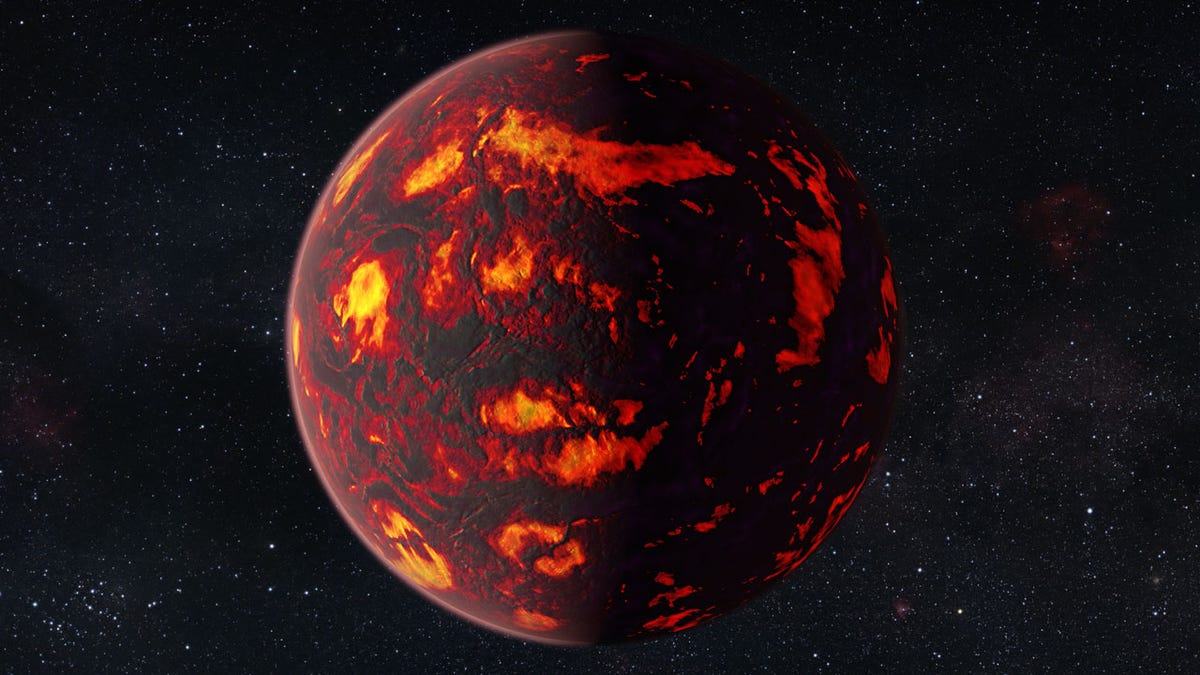Hubble probes atmosphere on 'diamond planet'
Using data from NASA's Hubble Space Telescope, astronomers analyze the atmosphere of a super-Earth for the very first time.

Super-Earths are giant, rocky exoplanets that are much bigger than our own rock, but still not quite as big as the gas giants whizzing around the universe. They're also likely the most common type of planet in our galaxy.
55 Cancri e is one such super-Earth, located about 40 light-years away, which is pretty close in astronomical terms. Using data from NASA's Hubble Space Telescope along with a new type of analysis, astronomers were able to determine the makeup of the planet's atmosphere. It's the first time researchers have been able to determine the exact composition of a super-Earth's atmosphere.
To find out what type of gases were swirling around the rocky 55 Cancri e, the researchers took advantage of an interesting property of the planet, which is about eight times bigger than Earth. 55 Cancri e is situated very close to its sun. So close, in fact, it only takes 18 hours for it to complete a full revolution, making for a very short year. This proximity allowed the researchers to use an analysis technique that let them see the planet's atmosphere when it passed in front of its sun.
An artist's impression of super-Earth 55 Cancri e crossing in front of its parent star. It's believed that temperatures on the surface of the planet can reach 2000 degrees Celsius (3632 degrees Fahrenheit).
"When a planet comes between its parent star and us, it blocks a portion of the light emitted by the star; this phenomenon known as a transit," Angelos Tsiaras told CNET's Crave blog. Tsiaras, a graduate student at University College London, is one of the authors on a paper describing the work that will soon be published in the Astrophysical Journal.
"If the planet is surrounded by an atmosphere, this portion changes when we observe the transit in different wavelengths," he said. "Also the variations are characteristic for each kind of molecule, allowing us to investigate which molecules are present in the atmosphere."
In short, they used the light of the super-Earth's sun to illuminate its atmosphere.
Using this technique, Tsiaras and his team found that 55 Cancri e has no water vapor, as you might imagine with its distance from its sun. It does have hydrogen and helium, which it hung on to from the nebula that birthed it.
"This result gives a first insight into the atmosphere of a super-Earth," said paper co-author Giovanna Tinetti in a statement. "We now have clues as to what the planet is currently like and how it might have formed and evolved, and this has important implications for 55 Cancri e and other super-Earths."
The planet's atmosphere also showed traces of hydrogen cyanide which could indicate it contains a good amount of carbon. This would fit with the exoplanet's nickname, the "diamond planet," which was bestowed upon it because some models have predicted it to have a carbon-rich interior.
"If the presence of hydrogen cyanide and other molecules is confirmed in a few years time by the next generation of infrared telescopes, it would support the theory that this planet is indeed carbon rich and a very exotic place," said UCL's Jonathan Tennyson, another of the paper's authors, in a statement. "Although hydrogen cyanide, or prussic acid, is highly poisonous, so it is perhaps not a planet I would like to live on!"

